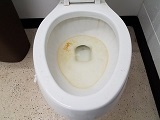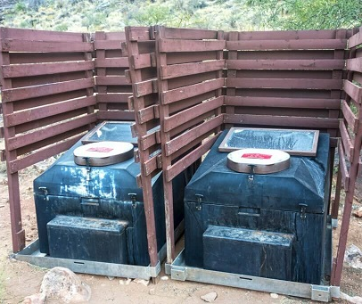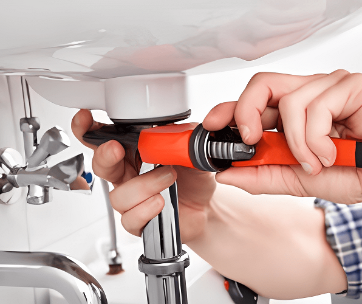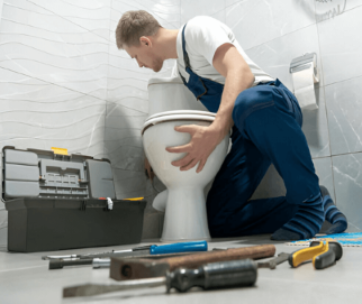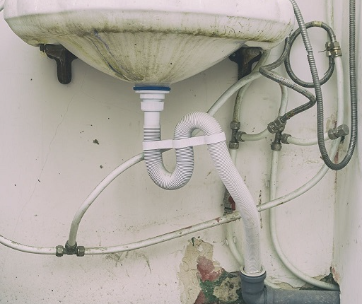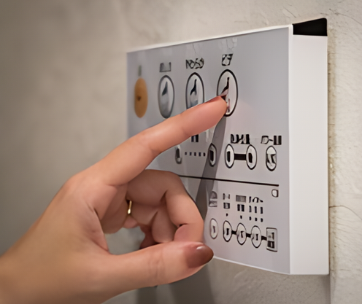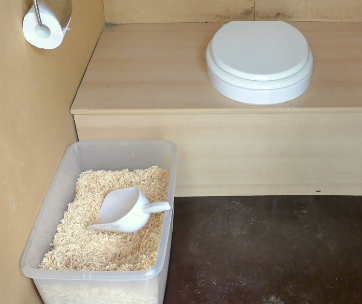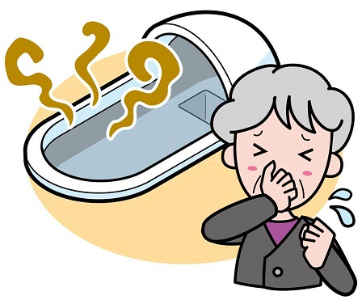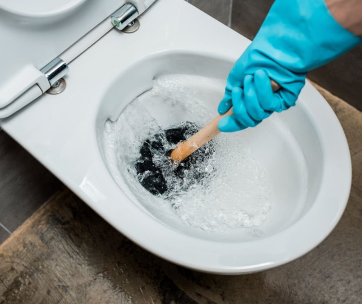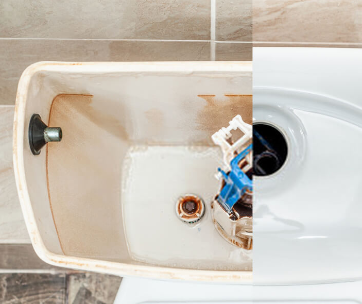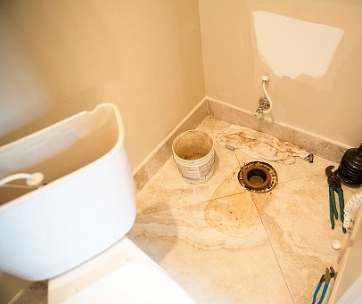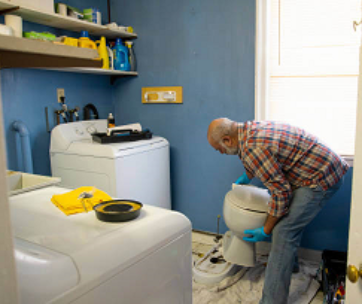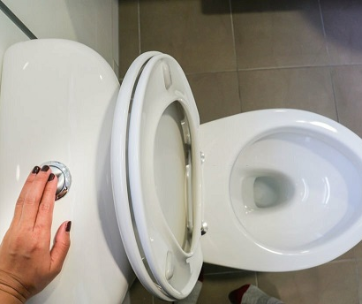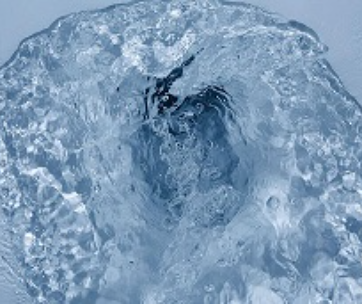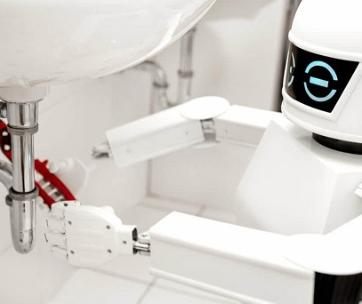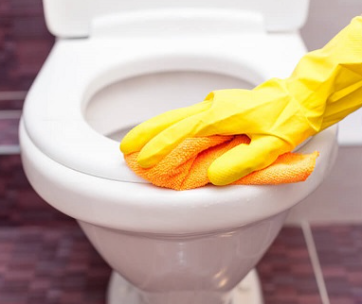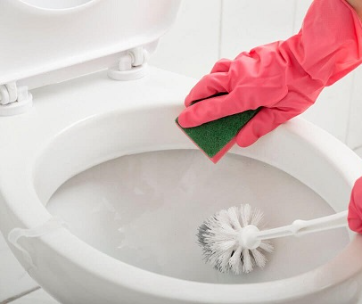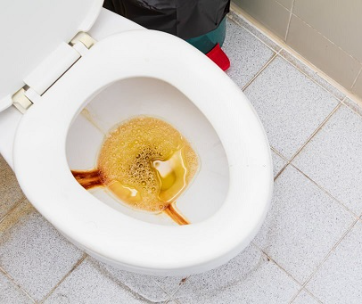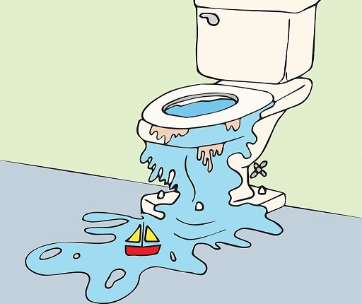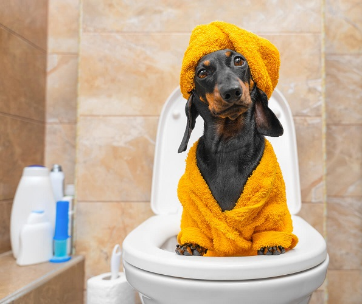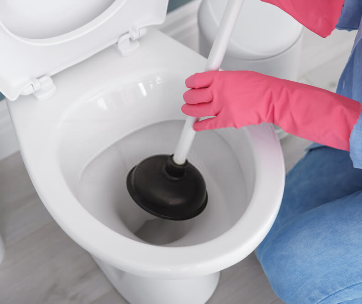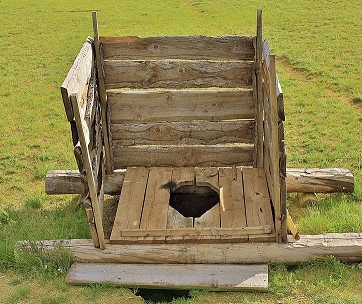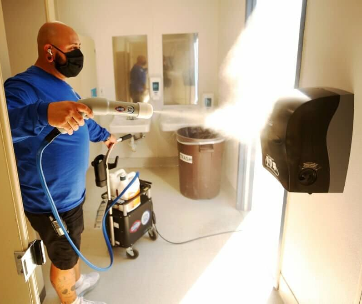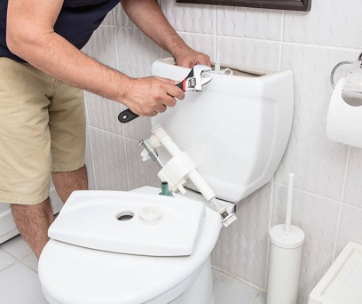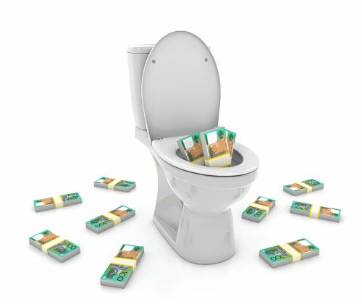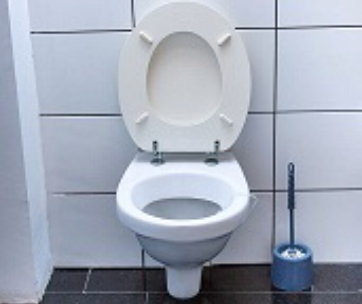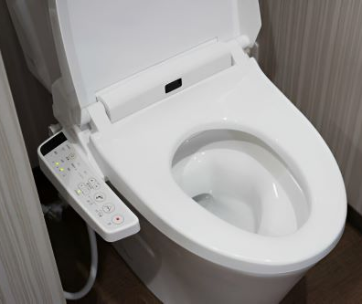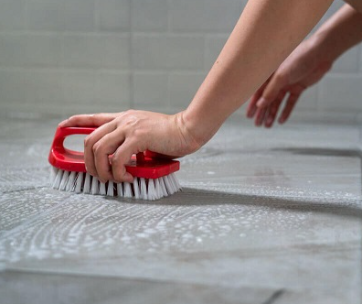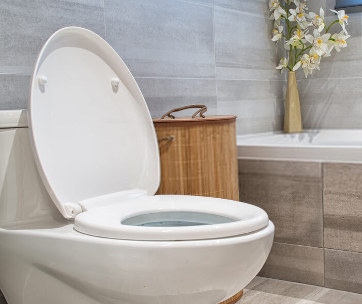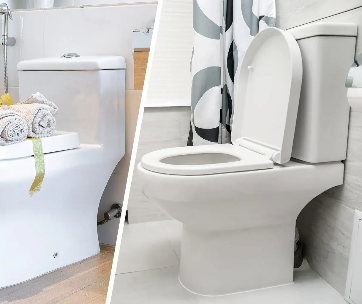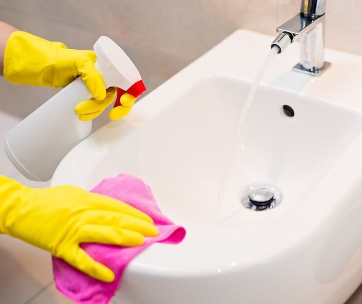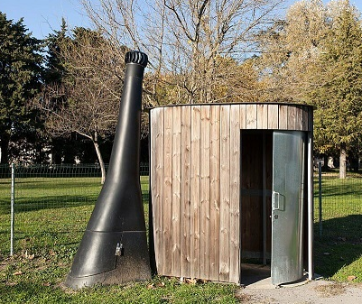EFFECTIVE WAYS TO GET RID OF TOILET RINGS
They often say the devil is in the details, and surely enough, the tiniest-sometimes most minute- aspect of something could make you lose your mind. So, you noticed a stain on your toilet, and not just any stain, a ring-like mark of filth outlining the edges of the toilet water on the bowl, etching a blot in your toilet and your life. Surely enough, try hard as you may; this ring does not seem to come off after dutifully scrubbing at it with a toilet brush for what seems like a long time, casting a shadow over your lavatory days.
So, what causes this cleaning nightmare in the first place? Toilet bowl rings can occur from various causes, with varying degrees of stubbornness. The basis, however, is that they all occur because of the constant shift between wet and dry conditions at the water's surface. The colour and the texture of these rings are solely dependent on what is causing them. While some home remedies and cleaning detergents may work on some toilet rings, a close analysis of the type of toilet ring is essential to establish the easiest way to get rid of it with the least hassle.
To remedy your household and toilet from this menace, here are the various types of toilet ring stains and a rundown of the effective ways to get rid of them.
TYPES OF TOILET RING STAINS
Toilet stains-being a modern-day plague can come in varying colours, textures and severity depending on its cause. Identifying the stain colour can go a long way in clearing it out and preventing future build-up. These colours include;
Pink Ring
This ring is usually pink in colour or, in some instances, bright red. This is caused by pink slime; the bacteria Serratia marcescens, which manifests itself as a sleek-looking circle around the edges of the water surface, lies in a toilet bowl. The bacteria thrive in moist, humid areas, making toilet bowls a conducive habitat for their growth. This primarily occurs in rarely used toilets as the colony of airborne bacteria will stay undisturbed as they accumulate over the toilet. However, it is not to be dismissed that this ring may also be caused by a build-up of minerals and would later turn into its orange counterpart, continuing its reign of terror in another life form.
Brown Ring
Usually caused by mineral build-up in a toilet, brown streaks could range from mild, light streaks to their more stubborn rust-like counterpart. They can also be triggered by hard water lying unused in a toilet for a long time. The hard water, which is rich in mineral salts, would form a brown ring on the toilet surface if left unperturbed for a given duration of time. This gunk is probably the hardest to get rid of as it completely attaches itself in a seamless layer on the toilet bowl, rendering the toilet unsanitary looking.
Green Ring
This stain is usually caused by lime build-up on the walls of the toilet bowl. This occurs as hard water evaporates, leaving behind a ghastly looking mineral build-up. As this happens, the toilet's surface picks up layer after layer of dirt, building a seemingly indestructible septic ring. In as much as you would assume this reflects on your cleaning prowess, it has less to do with the elbow grease you burn through and more to do with the fact that calcium, lime, magnesium and iron tend to attach themselves on any surface that gets into frequent contact with hard water.
Yellow Ring
Forming an off-white to light yellow tinge in your toilet, yellow stains may be the most frustrating of them all. Often resembling a urine stain, the undesirable tinge may leave you with a lousy repertoire among your guests. Shockingly enough, this stain is usually caused by sunlight, discolouring the toilet bowl over time through its UV rays. This stain can also be agitated further with ineffective cleaning products, or it may just be a sign that your toilet bowl is ageing.
Grey/Black Ring
Caused by a myriad of elements, a dull grey to black toilet ring stain, maybe your toilets way of saying you need to adjust your cleaning regimen before the build-up progresses to an irreversible state. This stubborn stain may result from bacteria, hard water, calcium, mole, moisture, and other harmful elements paired with a consistent addition of dirt particles. Additionally, the lack of use and constant cleaning of a toilet may result in this unsightly result.
Now that we have a rundown of all the possible stains and their manifestation, it may be more accessible for you to identify the particular ring that has coated your toilet. Sure, it might seem like there is not much one can do about some stain formation, but with a proper regimen and the right products, you could also have a toilet that is blindingly white in no time.
The trick is to find a blend of products and a cleaning regimen that would suit your toilet needs without the hassle of spending a fortune to either buy products you do need or to replace the toilet altogether. These products could either be a homemade blend of products in your pantry that do the trick or chemical products that would rid you of the gunk causing you sleepless nights.
CRAFTY TOILET STAIN REMOVAL METHODS
The solution to your nagging problem could be lying in your pantry as you read this. All you need is a bit of ingenuity and the patience to try out a myriad of mixtures to see which one suits you best.
Some of these blends include,
Vinegar And Baking Soda
Pour one cup of ordinary vinegar into a toilet bowl, swish it around with a toilet brush, then let it sit for a few minutes. Afterwards, sprinkle a cup of baking soda around the toilet surface and add two more cups of vinegar. This is bound to create a fizz as the vinegar's acidity reacts with the baking soda's basicity. The good news is, as this fizz continues, the dirt particles and stains on your toilet are lifted are softened. Leave it to rest for 15 minutes and then scrub at it with a toilet brush, a pumice stone, or both. You can clear out the remainder of the stains with some lemon juice. The vinegar and baking soda mix is rarely a miss; the resultant salt and reaction are effective stain remover. Not only will this work on your toilet bowl, but it can also be used on countertops, sinks and other such surfaces.
Scrub With Sandpaper
Sometimes, the most effective way to get a stain out is by using reasonable old brute force. Clear out the water toilet, especially around the ring, to ease the cleaning process, then go at it with a piece of sandpaper. Though abrasive and tiresome, this process will give you instant results and the gratification of getting out that stain that has blotched your otherwise clean toilet.
Coca-Cola
Once the shock of using a beverage dissipates from your face, it will be essential for you to empty your toilet bowl. Afterwards, fill the toilet up to the ring mark with Coca-Cola. Leave the soda in the toilet all overnight or over a few hours. Later, grab a toilet brush and scrub off the softened dirt debris from the bowl. You can then wash the toilet as you usually do with some detergent and a brush, then flush. Your toilet will have then had the coveted clean spark often depicted in toilet cleaner adverts.
Hydrogen Peroxide
Not only will it bleach your hair, but it can also work wonders for your toilet. Pour a cup of hydrogen peroxide into your toilet and leave it for an hour. After that, swish it around the surface of the toilet as you scrub at it with a toilet brush. This method may take a couple of tries before you see an improvement, but it is a sure way to clear out the stains from your toilets, especially when you also want to disinfect and kill the germs in your toilet. Hydrogen Peroxide is not only easy to find but can be used in many ways around the house, making it a worthwhile purchase.
Vinegar-Powder Detergent Paste
Mix a generous amount of your preferred powder detergent or toilet powder cleaner with vinegar in this method. After that, clear out your toilet bowl of water and smear the paste on problematic areas. Leave the mix on it for an hour or so or until it dries out. After that, grab your trusted toilet brush or a pumice stone and get to scrubbing. Ensure you scrub problematic areas the most so that it doesn't leave a base film upon which dirt can build. Do this periodically, and the resultant shine on your toilet could potentially stun you.
Toilet Detergents
There are a number of toilet cleaning products lined up on shelves that could help you get rid of stains. According to your preference, you could get powder, liquid, or pods that not only clean efficiently but also scent up your toilet, masking any odour that may be emitted. You must try out various products to see which omen suits you best within your budget. It is important to note that mixing cleaning chemicals may cause more harm than good and lead to respiratory diseases, so one must practice caution.
In as much as these combinations would help clear out that annoying ring, certain practices ensure you do not have to experience a toilet ring ever again. When used religiously, these practices could save you time and money when cleaning one of the essential items in a home; your toilet.
PRACTICES TO MAINTAIN A RING-LESS TOILET
Adopt A Cleaning Schedule
How often do you clean your toilet? Believe it or not, consistent cleaning could potentially save you a lot of hassle in preventing toilet rings and stains. Ensure you adopt a cleaning regimen that would maintain the hygiene and cleanliness of your toilet. Cleaning your toilet once a day or once in two days should be a priority within your household, not only to keep away nagging gunk but to also maintain an odourless toilet.
Flush After Use
Do not dismiss the effect that flushing after use could have on the toilet. Leaving waste in a toilet, especially urine, would, over time, cause a build-up of stains. It is a good practice to maintain a clean toilet at all times, especially if multiple people are using it. Lack of toilet hygiene could cause diseases, so make sure you always flush after using it.
Change Your Toilet Cleaning Tools
Since you barely spend a lot of time in the toilet, it may turn into a neglected area, and you might not necessarily change the apparatus with which you clean. Ask yourself, when was the last time you changed your toilet brush and/or pumice stone? When did you last clean the crevices and corners around your toilet? How often do you change these tools of cleaning? A worn-out toilet brush and pumice stone will not be effective and will be prone to leaving stains on the parts where it is worn out. Make it a habit to change your toilet brush at least after every two months.
Parting Shot
With these cleaning tips and tricks, your toilet will go back to its sparkling glory, saving you the constant headache of witnessing random stains whenever you want to relieve yourself. Nurturing good cleaning habits, especially in sensitive areas in your house like the toilet, which can be a breeding ground for germs and disease, will go a long way toward improving the quality of your life. Adopt these tips today and see how the little things in life could brighten up your whole day.

